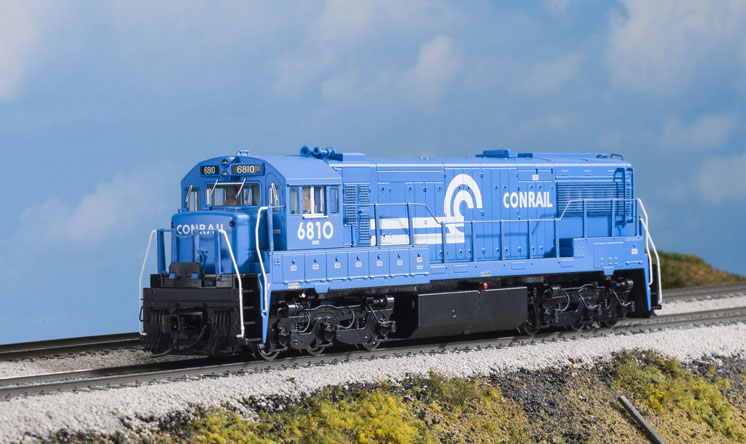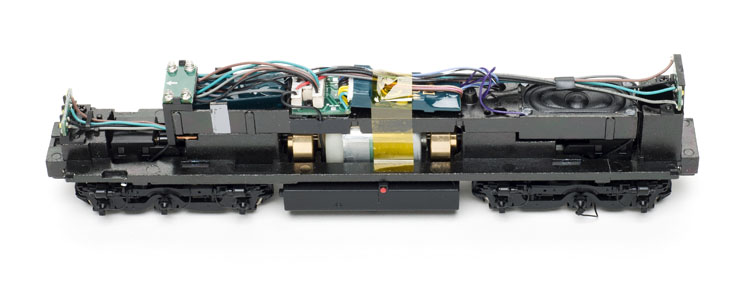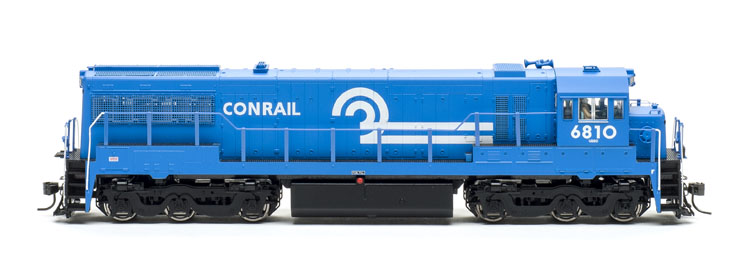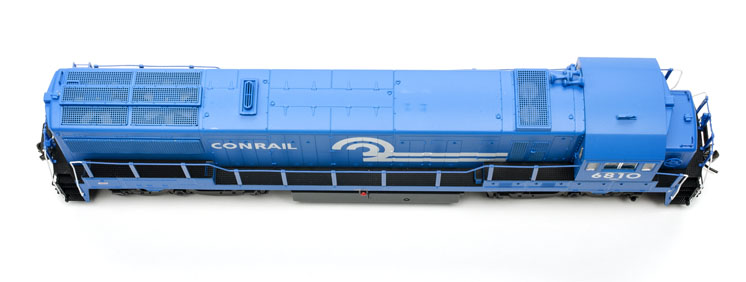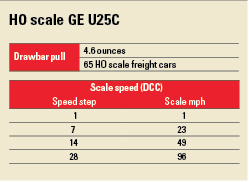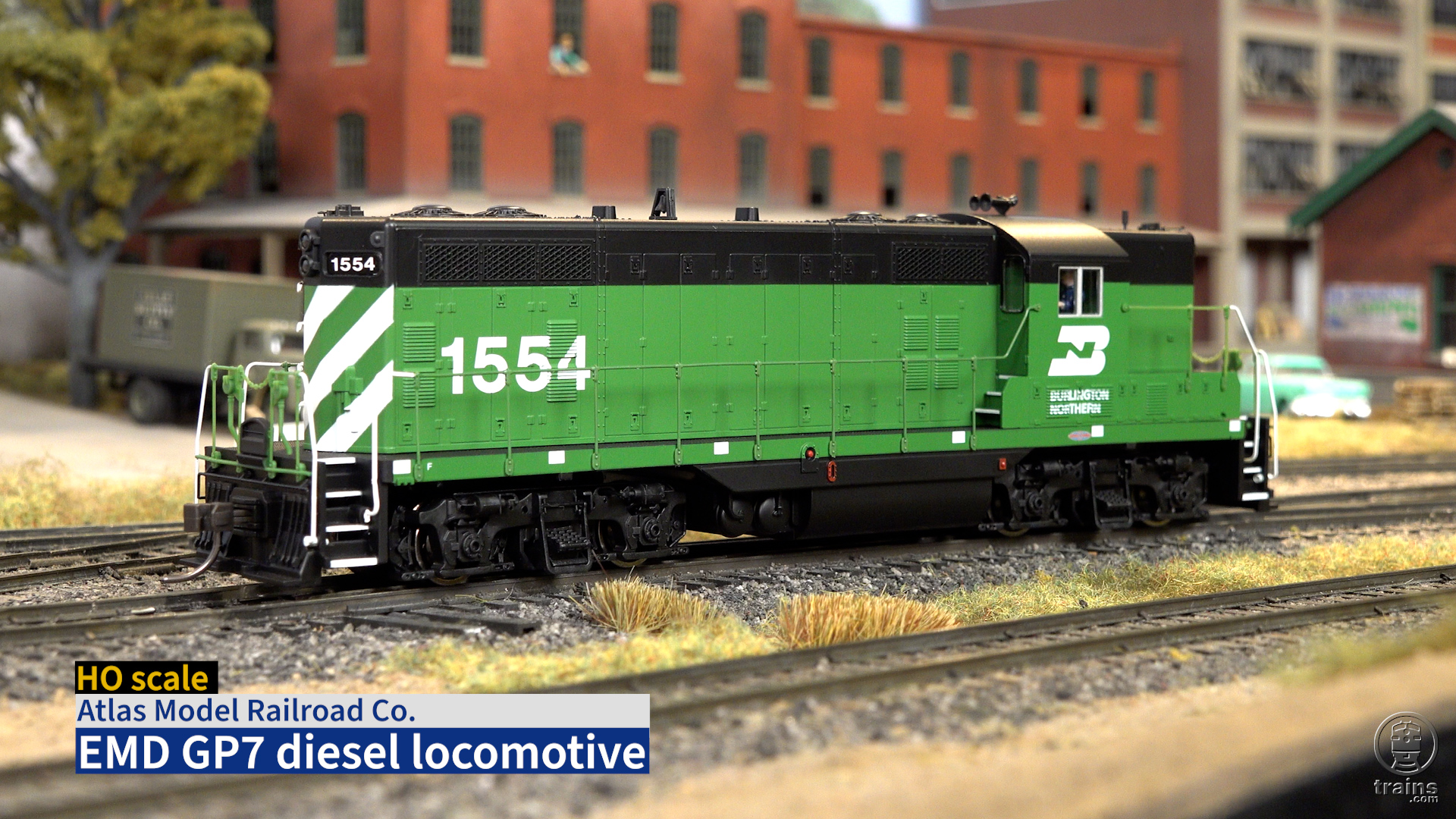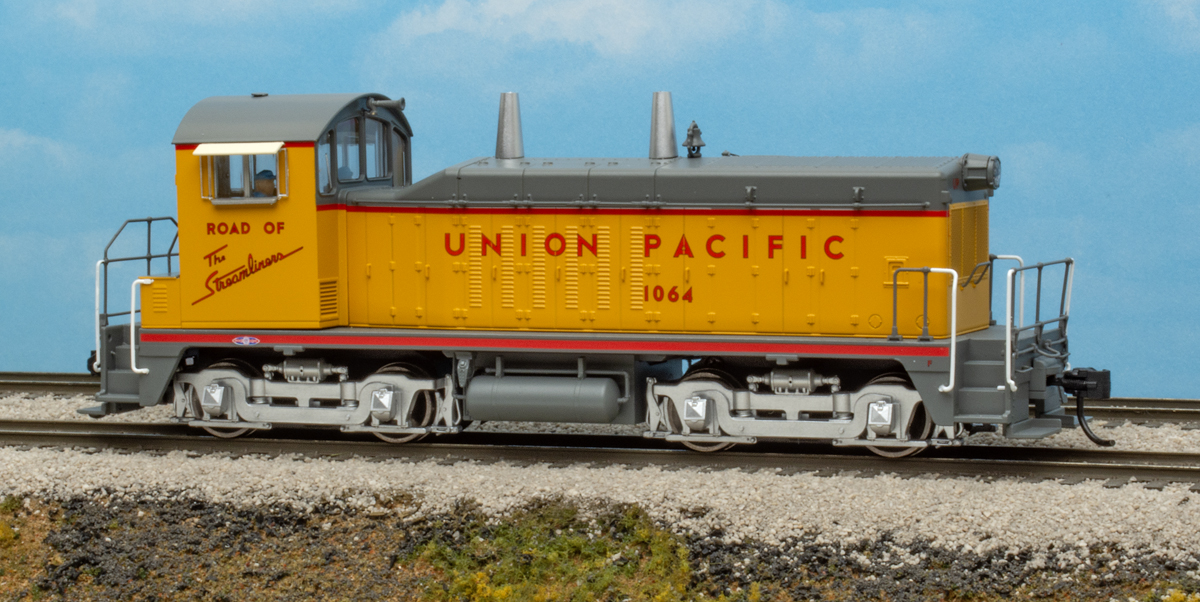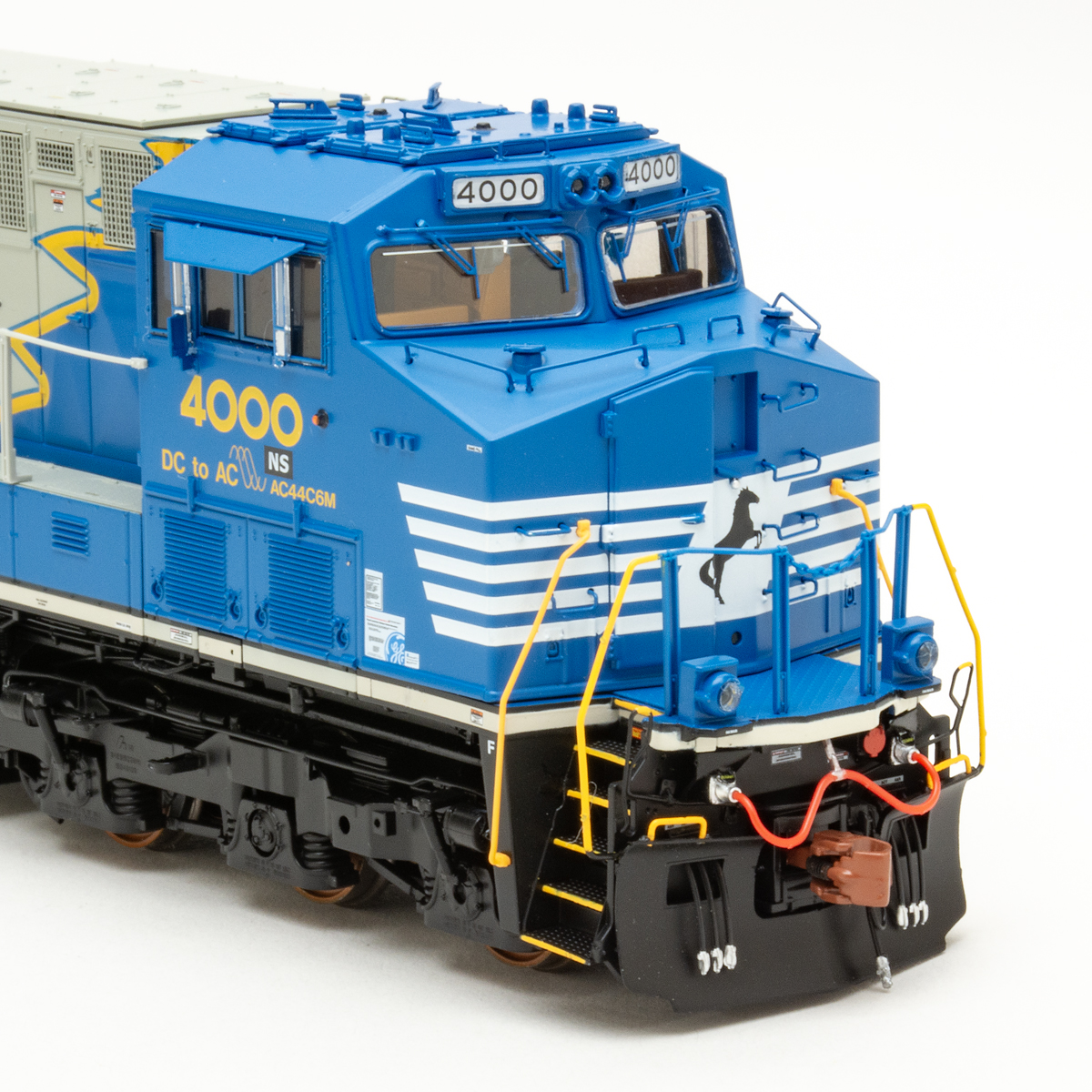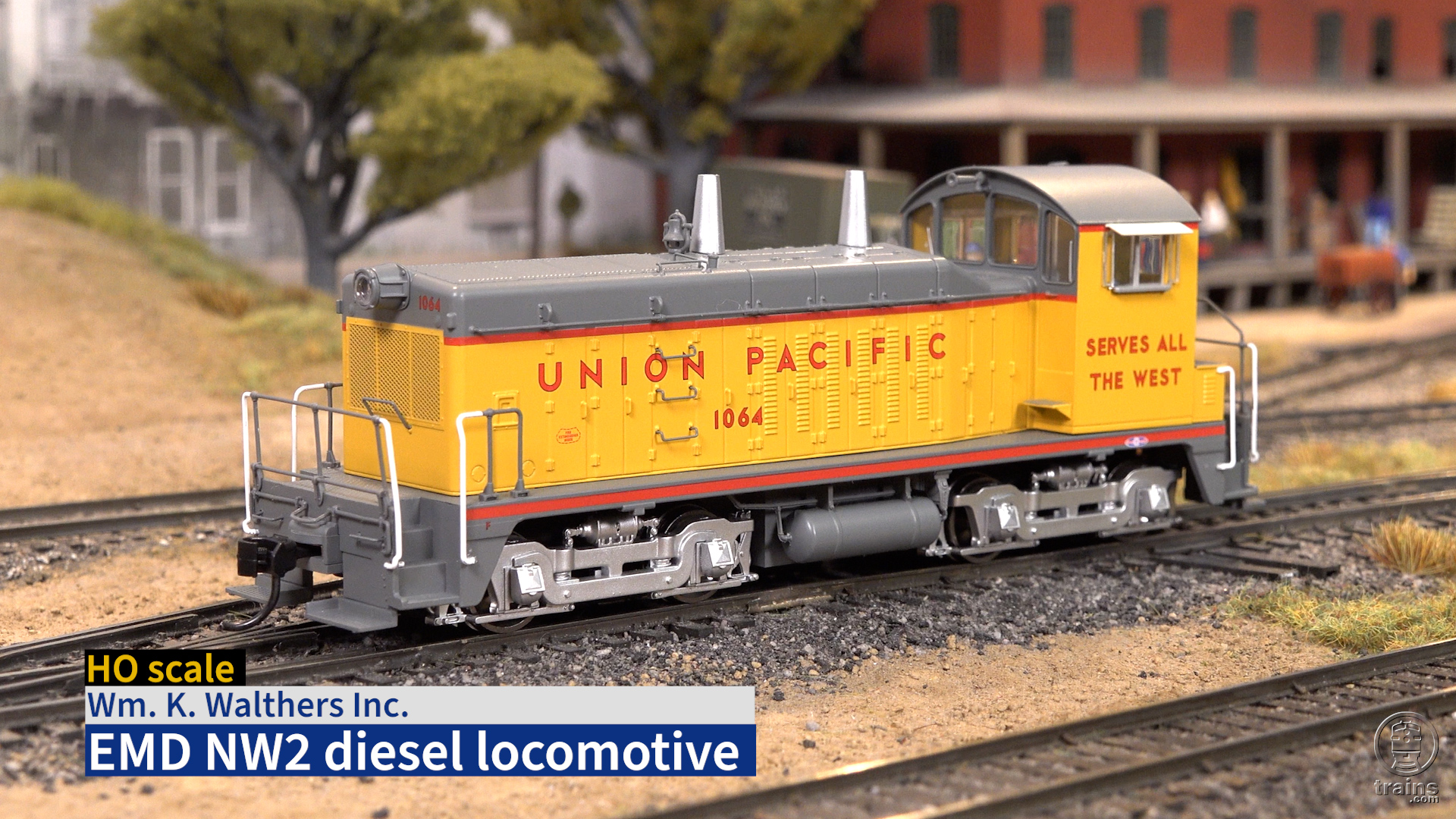A General Electric U25C marks the debut of Korea Brass USA as a new brand in the HO scale locomotive market. The six-axle locomotive accurately models its second-generation diesel prototype. The best news for Digital Command Control operators is that the model is available with a factory-installed Train Control Systems WOWSound (WOWDiesel version) DCC decoder.
The prototype. Following the success of the four-axle U25B, GE introduced a six-axle version in 1963. Both locomotives had 2,500 hp FDL-16 engine as their prime movers. The U25C, and all the locomotives in GE’s “Universal” series, were nicknamed “U-boats.”
Only 113 U25Cs were built, beginning with six for the firm building Oroville Dam in California. Other customers included the Atlantic Coast Line; Chicago, Burlington & Quincy; Lake Superior & Ishpeming; Louisville & Nashville; and Northern Pacific.
General Electric delivered a total of 20 units to the Pennsylvania RR in 1965. Many of the PRR U25Cs were relettered after the Penn Central merger and eventually finished their careers in the 1970s and 1980s lettered for Conrail.
The model. Most of the major dimensions of the Korea Brass model match a prototype diagram in the 1966 Car and Locomotive Cyclopedia of American Practice (Simmons-Boardman). As with other HO locomotive models, the overall length over coupler pulling faces is a scale foot too long because of the oversize model knuckle couplers.
The model has a plastic body shell that accurately represents what railfans refer to as a Phase III U25C, with air reservoirs behind the cab and screened access doors. Phase II U25Cs had louvered doors and Phase I versions had air reservoirs on each end of the fuel tank.
On the model, the air reservoirs and radiator fans are separate parts behind see-through etched-brass screens. Other separately applied detail parts include the Sinclair “ice skate” antenna on the cab roof, the properly positioned three-chime air horn and bell, and the windshield wipers. The cab interior includes painted crew figures.
The tri-mount trucks have the correct 7′-3″ and 69″ axle spacing. The plastic sideframes feature separate brake cylinders and sand lines. To avoid interfering with the swivel of the trucks, the sand lines on the model end at the tops of the sideframes, which isn’t prototypical.
Our review sample models Conrail no. 6810, one of the CR U25Cs that were repainted in the railroad’s blue livery. The blue paint has an even, but thick, finish. This softens some of the raised detail, such as rivets and hinges.
The placement of the lettering, herald builder’s plate, and warning stencils matches prototype photos. However, the spacing between the numerals on the model’s number boards looks half as wide as those on the prototype.
The lighting board, TCS decoder, and Keep-Alive capacitors are attached to the top of a die-cast metal weight, which also provides an enclosure for a 5⁄8″ x 13⁄8″ rectangular speaker.
Four surface-mount light-emitting diodes on each end of the locomotive provide illumination for the headlights and number boxes, as well as the cab interior. With the shell in place, the light from the rear set of LEDs bleeds through the housing, causing a slight, unrealistic glow from the top radiator grills.
Performance. Although our TCS WOWDiesel-equipped U25C will run with a direct-current (DC) power pack, the sounds don’t function in DC. Therefore, I tested our review sample as a DCC-only locomotive.
Controlled with a DCC system, the decoder provided exceptional slow-speed control, creeping along at 1 scale mph. Back-electromotive-force (back-EMF) control kept the speed steady when hauling a load or heading upgrade.
The model’s 96 scale mph top speed is faster than the prototype. However, reducing the top speed can be easily adjusted by programming configuration variables (CVs) 2, 6, and 5. The decoder also supports user-loadable speed tables.
In real-world testing, the U-boat showed some exceptional pulling power, including hauling a 20-car coal train up a 3 percent grade without any slipping. The model easily negotiated 18″ radius curves and no. 5 turnouts. The decoder’s Keep-Alive capacitor provides 10 seconds of power, ensuring uninterrupted operation, lights, and sound.
WOWDiesel. After a short startup sequence, the decoder’s engine sound settled into a throaty idle. It sounds like a prototype recording of an FDL-16.
The decoder has three throttle modes. In traditional mode, the DCC throttle controls the train speed and braking like any other model. In manual notching mode, function keys control the engine rpm sound independent of the train speed. In prototype mode, the engine rpm is controlled by back-EMF on the motor, so as the load increases, the rpm sound increases. The engine sound will automatically notch up when starting a heavy train or heading upgrade, then notch down as the locomotive gets under way or heads downgrade.
In prototype mode, braking is also independent of the throttle and is controlled by function buttons. Function 5 triggers a dynamic brake effect that, in addition to the sounds of the fans, will slow the train with each key press.
Pressing function 8 twice toggles between sound and light function modes. Sound effects include a long and short horn blast and a grade-crossing signal. The default bell and “GE U-boat three-chime” horn sound correct to me, but if you disagree there are more than 30 bells and prototype horns to choose from. There are also coupling and uncoupling effects, “spitter” valves, and windshield wiper sounds.
When the crew alert feature is activated, the locomotive will randomly simulate an emergency stop. I could turn on the directional headlights in either light or sound mode. Other lighting effects include the cab light and number boards, both triggered by function 1. I used function 4 to dim the headlight, after programming CVs 49 and 50, as noted in the printed instruction sheet. More extensive manuals are available for free at tcsdcc.com.
Some programming tasks, such as function mapping and choosing sound and light effects, are easily accomplished using the decoder’s Audio Assist feature. After pressing “8” four times, voice prompts guided me through the programming process. I found the feature especially helpful for adjusting volume levels and calibrating the locomotive for prototype mode operation.
The decoder supports CVs 19, 21, and 22 for easy advance consisting and consist function control. This detailed U boat, the first locomotive available with a factory-installed TCS WOWSound decoder, is an impressive entry from Korea Brass. I look forward to future models from this manufacturer.
This detailed U boat, the first locomotive available with a factory-installed TCS WOWSound decoder, is an impressive entry from Korea Brass. I look forward to future models from this manufacturer.
Price: $299.99 (DCC sound), $199.99 (DC, no sound)
Manufacturer
Korea Brass USA
845 Blooming Glen Rd.
P. O. Box 341
Blooming Glen, PA, 18911
www.korea-brass-usa.com
Era: 1963 to early 1980s
Road names (multiple road numbers): Conrail; Atlantic Coast Line; Burlington Northern; Chicago, Burlington & Quincy; Lake Superior & Ishpeming; Louisville & Nashville; Northern Pacific; Oro Dam Constructors; Penn Central; Pennsylvania RR; Seaboard Coast Line. Undecorated version also available.
Features
▪▪All-wheel drive and electrical pickup
▪▪Factory-installed Train Control Systems WOWDiesel sound decoder with Keep-Alive capacitors (DCC version)
▪▪Five-pole skew-wound motor with dual brass flywheels
▪▪Plastic operating knuckle couplers, at correct height
▪▪RP-25 contour metal wheels, in gauge
▪▪Weight: 1 pound 4.6 ounces





